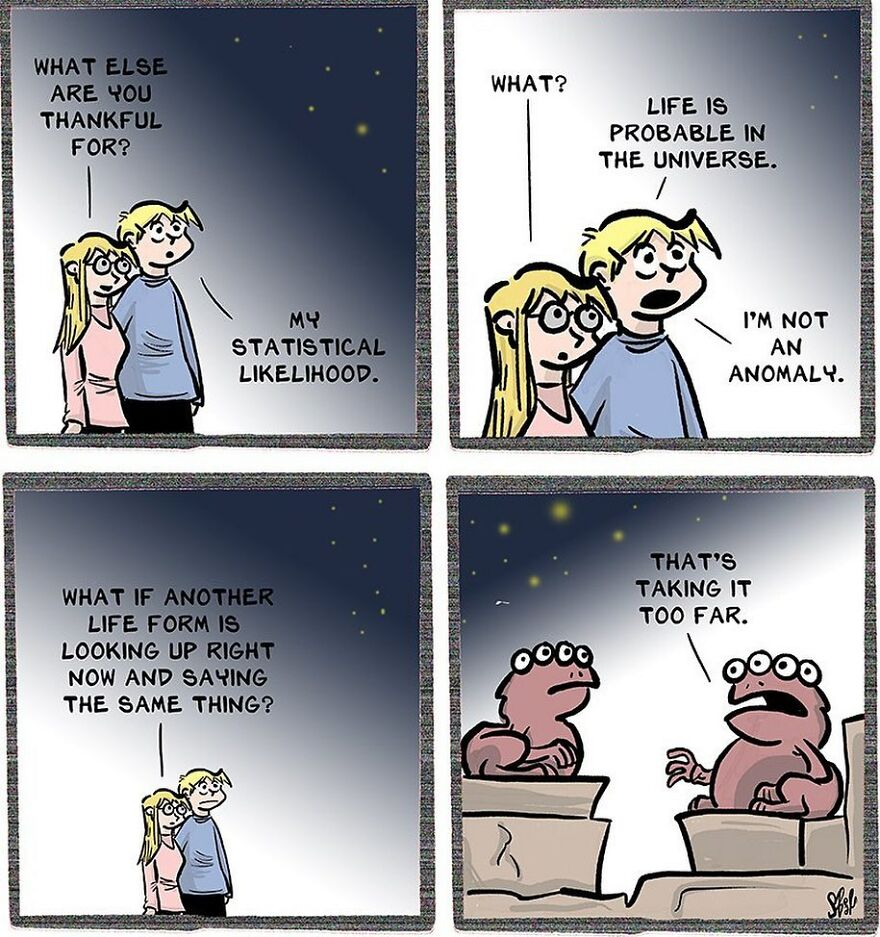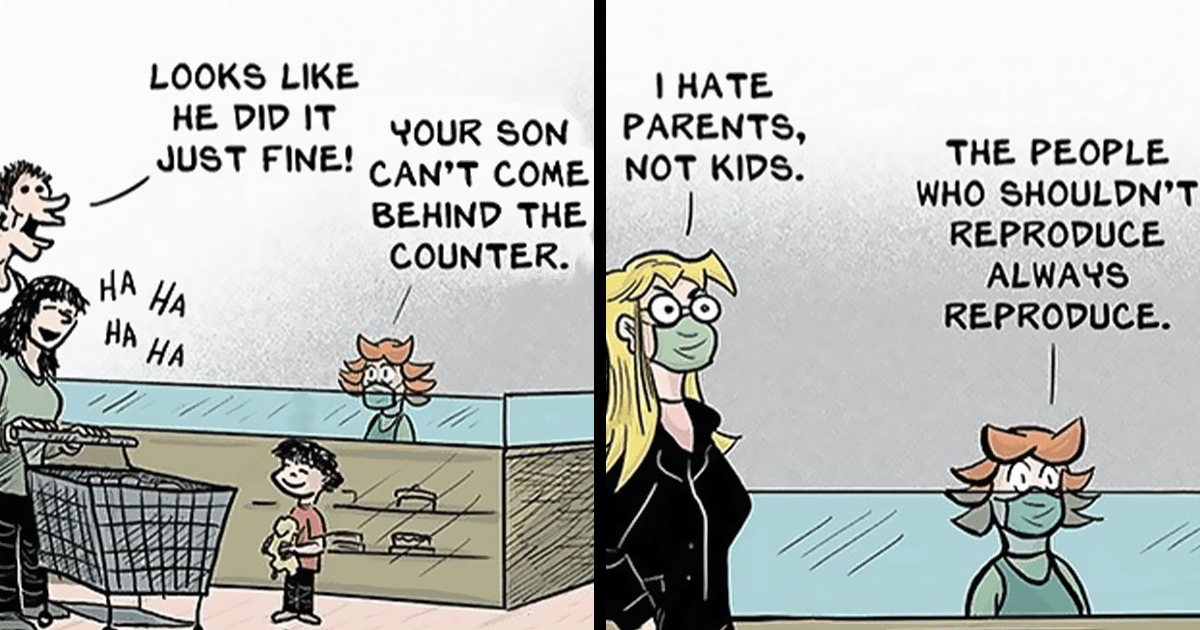They say “take your broken heart and make it into art.” In Stephen Beals’ case, it is more turning negative emotions into humorous comics. Yes, you’ve heard it right, “Adult Children” is back here.
Stephen Beals is an artist who has been drawing comics since forever “out of pure love for the art form.” As Stephen said himself, his illustrations are something he made after work to let off steam. He titled them “Adult Children” because, according to the artist, “adulthood seems to be a myth we tell children in order to get them to behave.”
Below are his humorous Comics that retail workers and regular people will probably relate to.
#1

The characters in these comics are Stephen Beals divided into four different parts. A truly interesting concept. The artist believes that we all have different personalities, or at least Stephen has “four usable ones.”
As the artist explained, Penny and Berle are brother and sister. Harvey (named after Stephen’s grandfather) has known them since they were kids and has formed a long-term relationship with Penny.
Harvey is Stephen’s ego, Berle is his complete ID, Penny is his small part of the responsibility, and Claremont (the dog) is Stephen at his best, “which is why he’s a dog.” There’s also Todd (an extra), who represents the naive side of the artist.
#2

#3
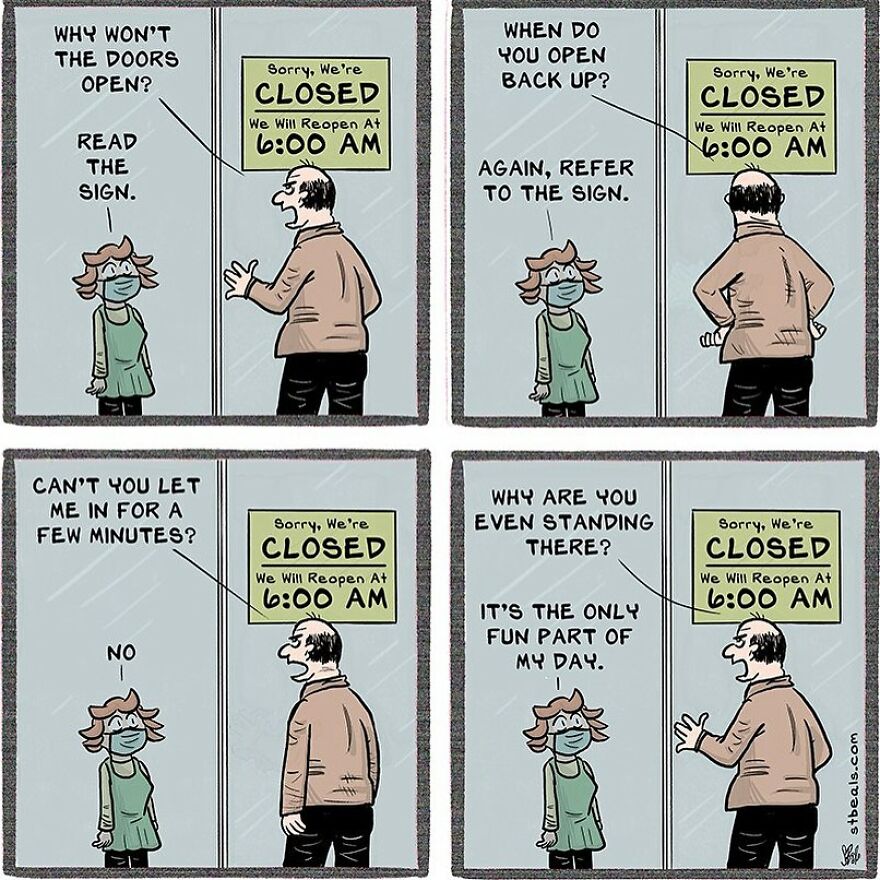
The artist told us that he graduated with a degree in animation from the California Institute of the Arts. For nearly all of his college years, according to Stephen, he was still a teenager and, thus, still stupid. “I made a bad choice. I love animation and film, but I ultimately didn’t want to work in the industry. I wanted to make comics, which notoriously doesn’t pay enough to buy the luxuries I’ve grown accustomed to, like toilet paper, so I wound up working for the university library. I love libraries! Who doesn’t? If you don’t, find out more at your local library.”
Stephen continued: “The library I worked for was busy. Very busy. ‘I’m going to die’ busy. I dealt with every kind of person imaginable. Libraries are similar to retail except they’re free to the public, so everyone is welcome unless they are actively trying to set the place on fire.”
#4
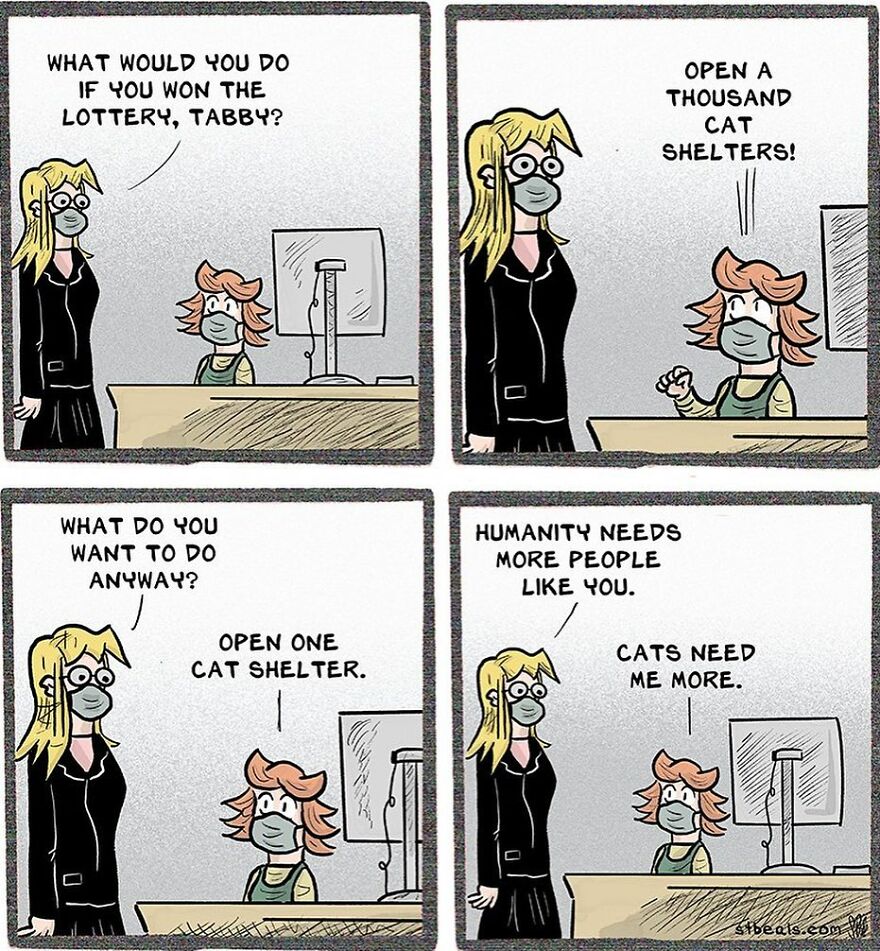
#5
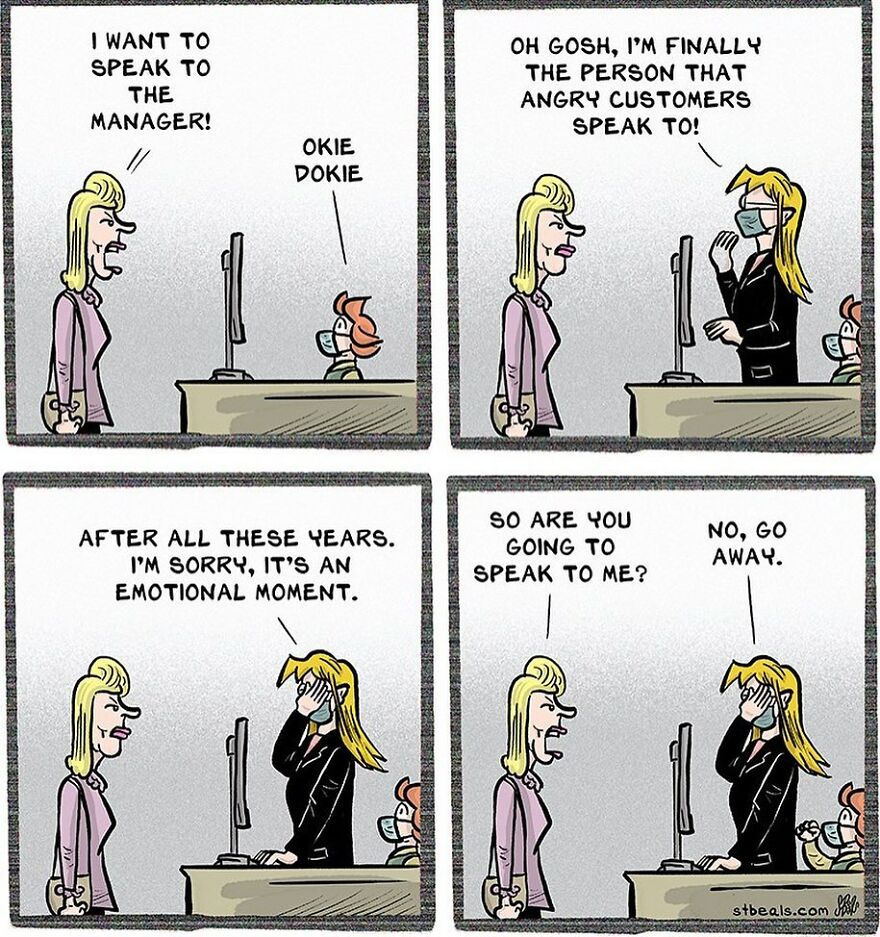
“I thought about becoming a librarian, but I spent quite a bit of money on my art degree and it was kind of like letting a good bottle of milk spoil. I left to work in advertising. For quite a few years I designed every ad conceivable and worked on marketing strategies to sell things that I wouldn’t buy unless it was to resolve some sort of hostage negotiation. Advertising wound up being somewhat cold and monotonous. I missed people, even the weird ones like myself.
At times, I would work part-time at large retail stores to help pay for my expensive habit of heating my house. I liked working with people again, but it was hard to get passionate about daily retail concerns like price tag placement or expired candy bars.
I combined my two passions and made a conscious decision to go back to serving the public at a print shop. I wound up working for quite a few printing establishments and now work for one of the biggest. I get to design things and deal with very strange people at times. Perfect!”
#6
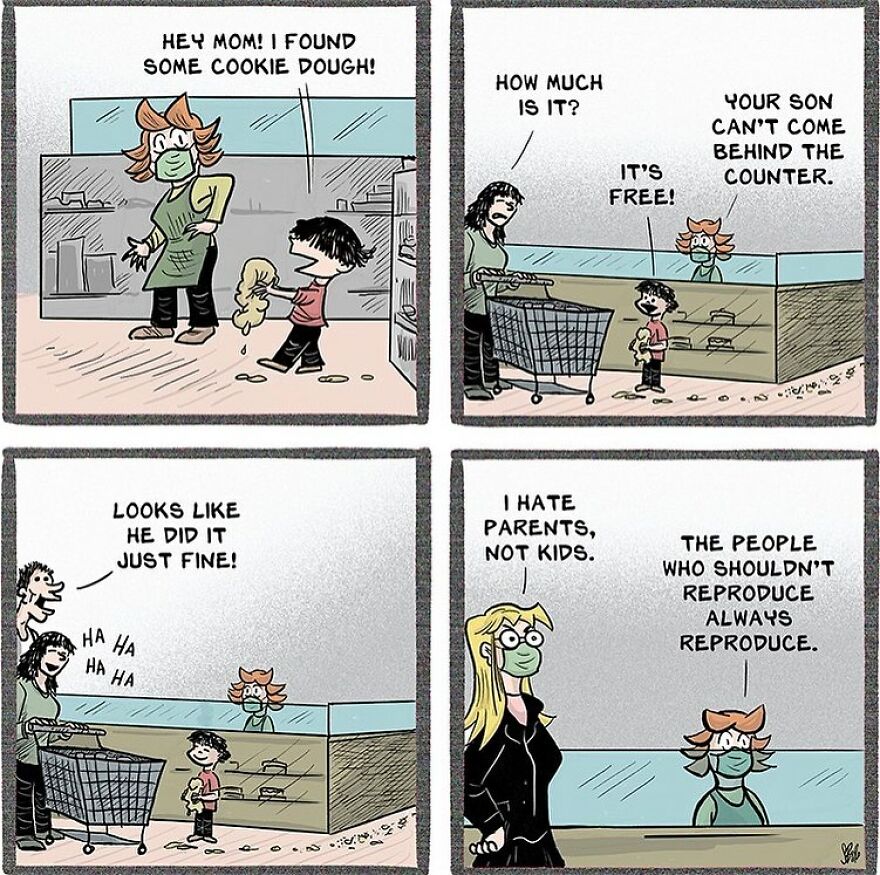
#7
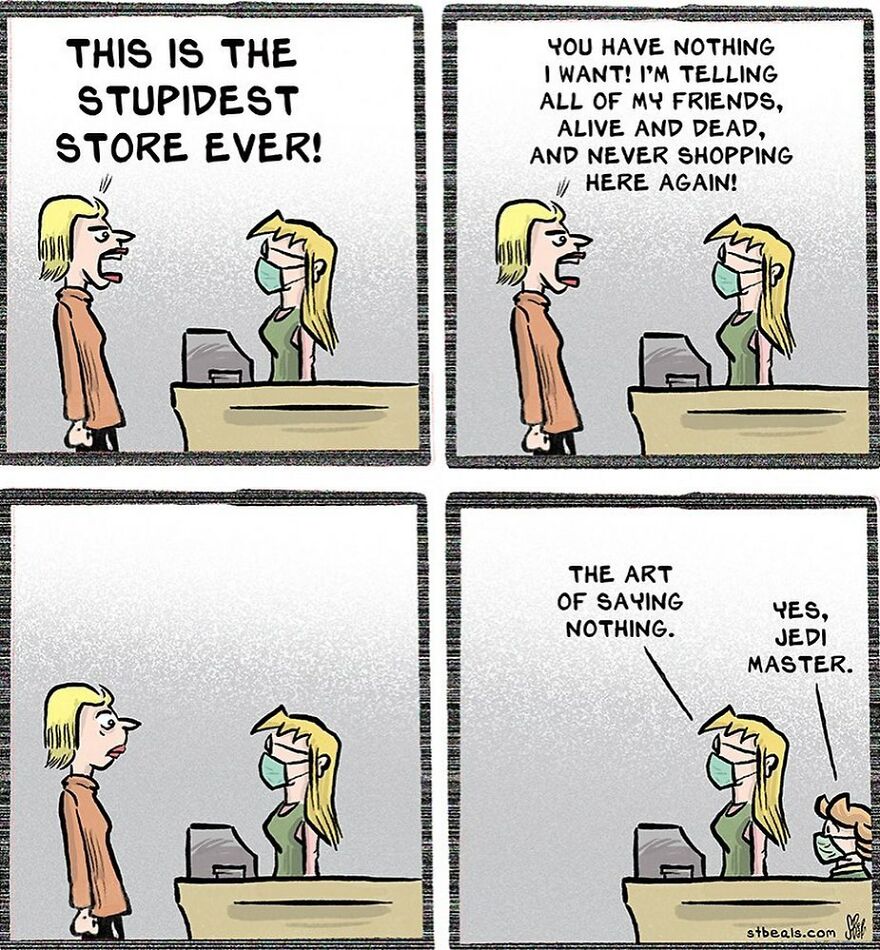
Being busy working at the print shop, the artist still manages to post comics every day. For Stephen, it’s the best part of his day. “To paraphrase the great writer Shelby Foote, ‘It takes me a very long time to get started on something and I solve that problem by never stopping once I’ve started.'”
The most challenging part of the creative process for the artist is the idea he is trying to convey. “I’ve heard other cartoonists describe writing comics as being similar to writing poetry, and I used to scoff at that, but I now think it’s true. The pacing with dialog has to be on key or it doesn’t work. I know this because I’ve made hundreds of comics that don’t work. Honestly, that’s the way I learn everything. A few hundred failures equal success.
“There’s an old adage that good writing can overcome bad art, but good art can never overcome bad writing. I depend heavily on this adage when I’m in a hurry. Some comics I make only for me, like the one I did using an iambic parameter. Those are too much fun to count as failures even if I’m the only one enjoying it.”
#8
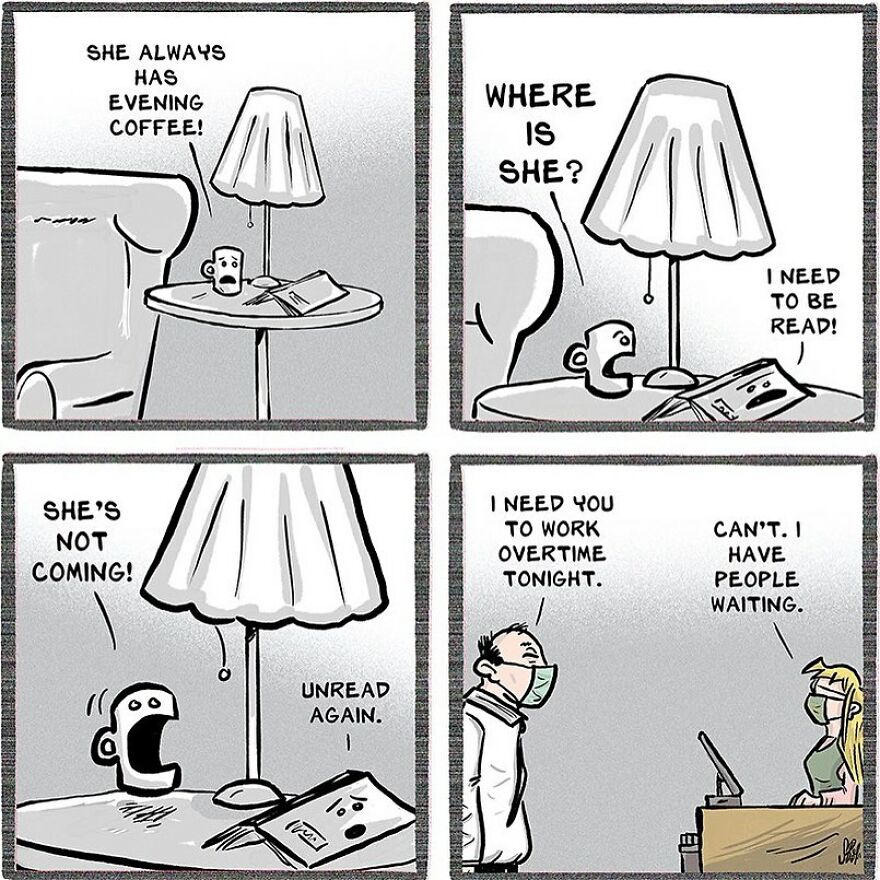
#9
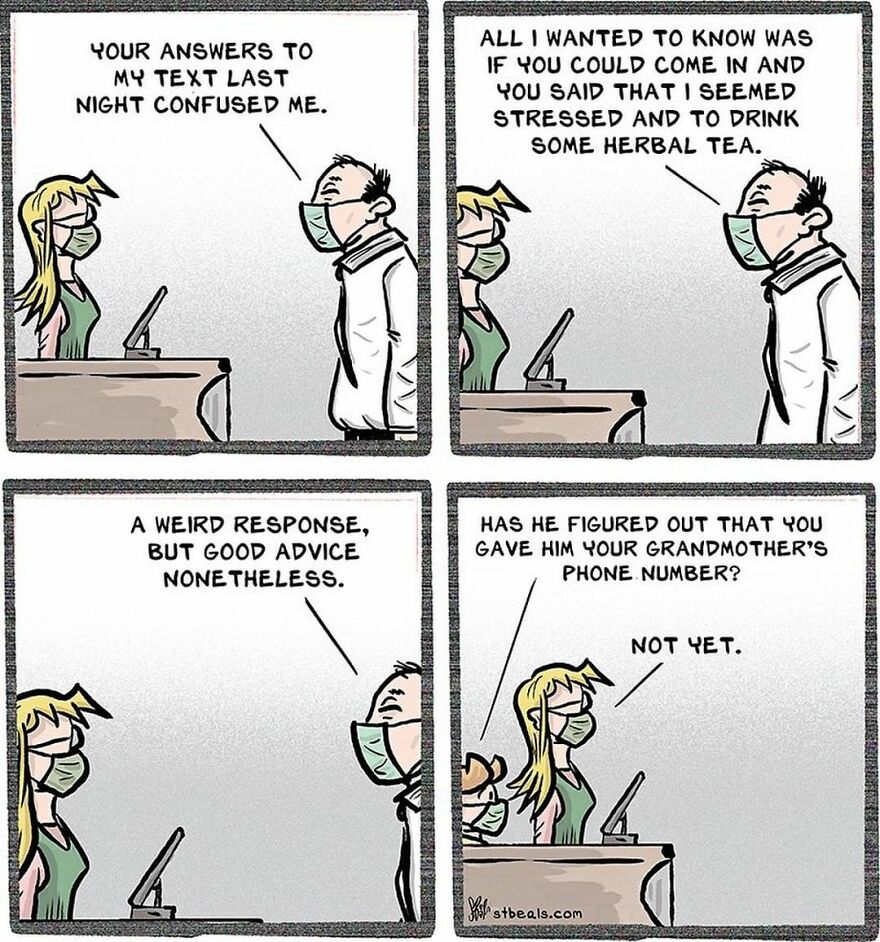
Stephen shared that he loves to write and we guess you noticed that already. “If there’s anything that I love as much as comics, it’s books. I am constantly listening to an audiobook, reading a book, and reading blogs. If offered a writing gig I would not hesitate to throw myself into it.”
The artist is also a huge fan of old humorists. “Many humorous essay books were illustrated by very good cartoonists and I always think of those as perfect books. I hope to have an eBook out if only to please myself and have something for people to actually buy. Short of that, a blog post or weekly essay is something I wish to resume (I did do that some time ago for websites that no longer exist).”
#10
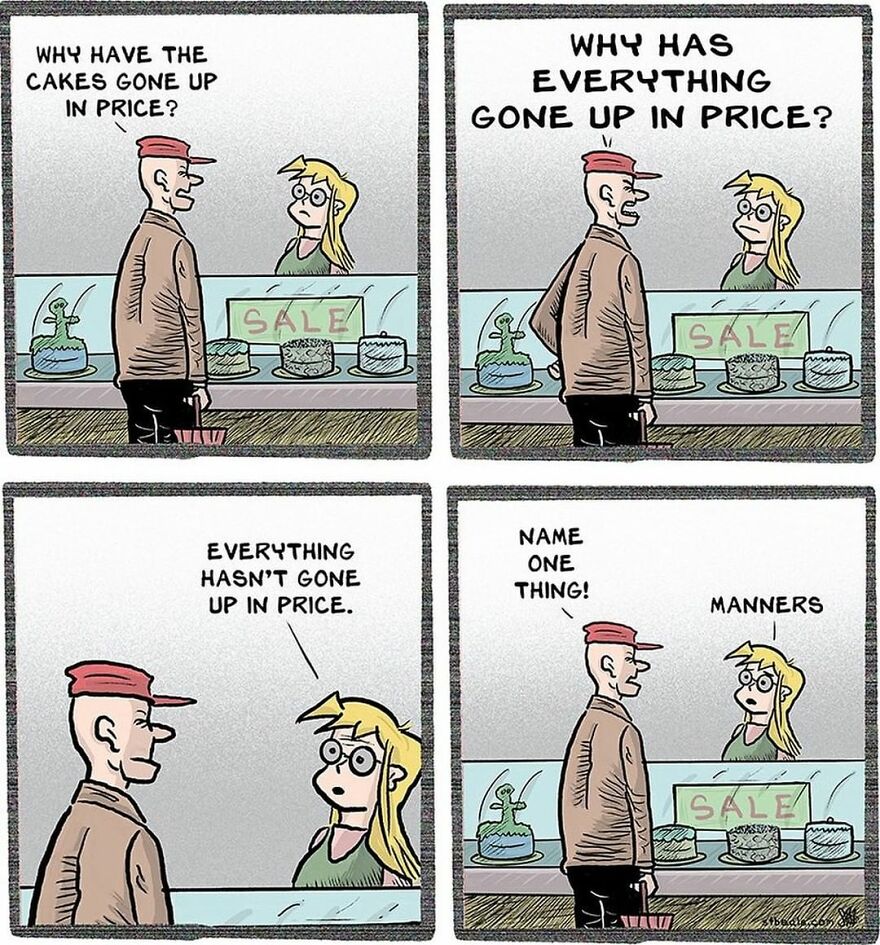
#11
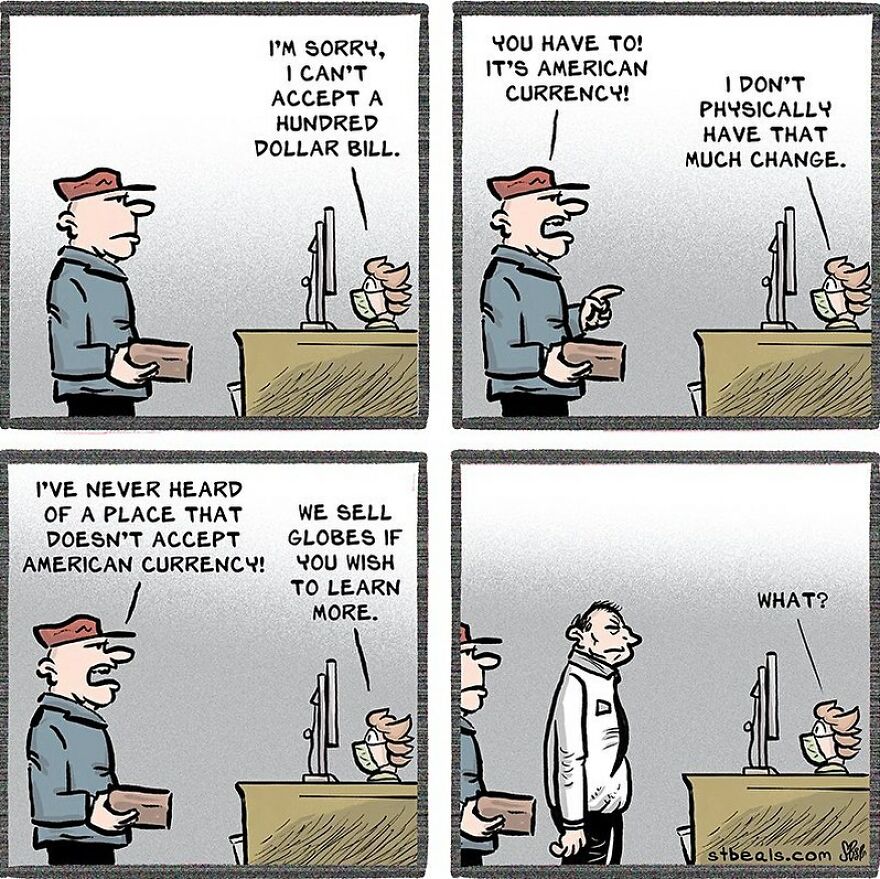
What originally made the artist passionate about comics was newspaper cartoonists from his childhood. “It’s such a unique form of entertainment. Today, my passion remains alive by those who are currently making comics. I would put today’s crowd of cartoonists up against any in the history of the medium. I’ve had the pleasure of meeting a number of my fellow creators and they never cease to make me laugh and love everything about cartooning.”
#12 Two Windows Of My Workplace Are Constantly Fighting For The Honor Of Being The One Who Is Going To Be Opened
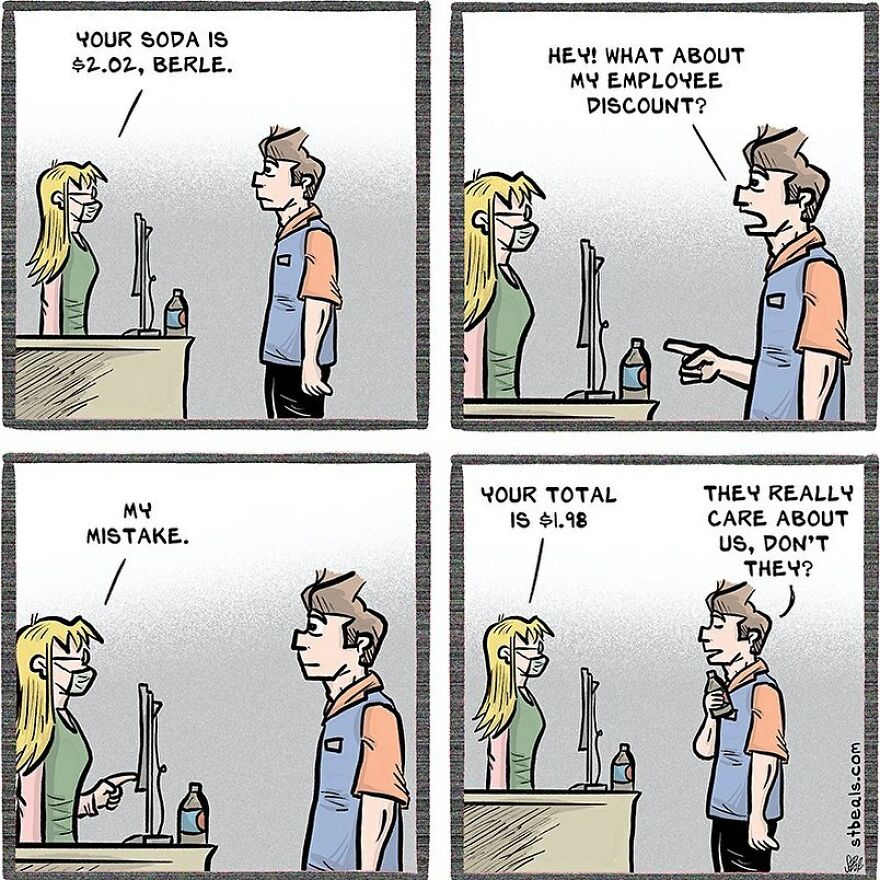
#13
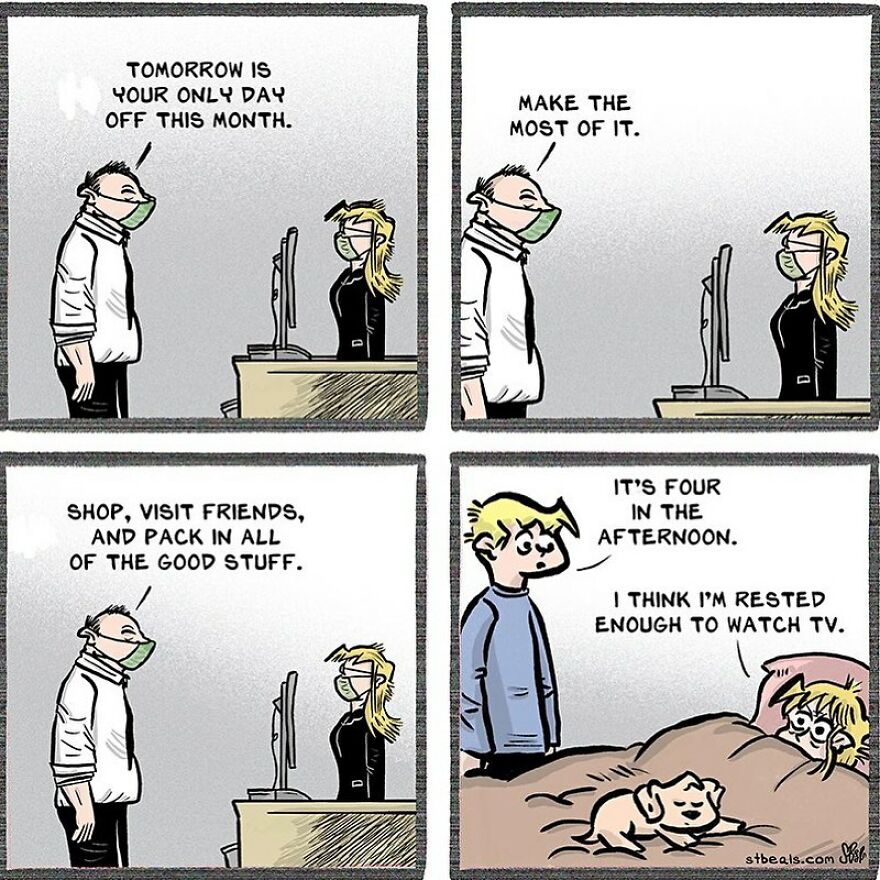
“I receive more personal responses to my comics about retail than anything I’ve ever made in the past. People have written me to share some very hilarious stories as well as others that describe painful work scenarios. Really, that’s more rewarding than any amount of money. As far as I know. I’d like to test that theory by getting a large amount of money and comparing the two, but this experiment lacks funding.”
#14
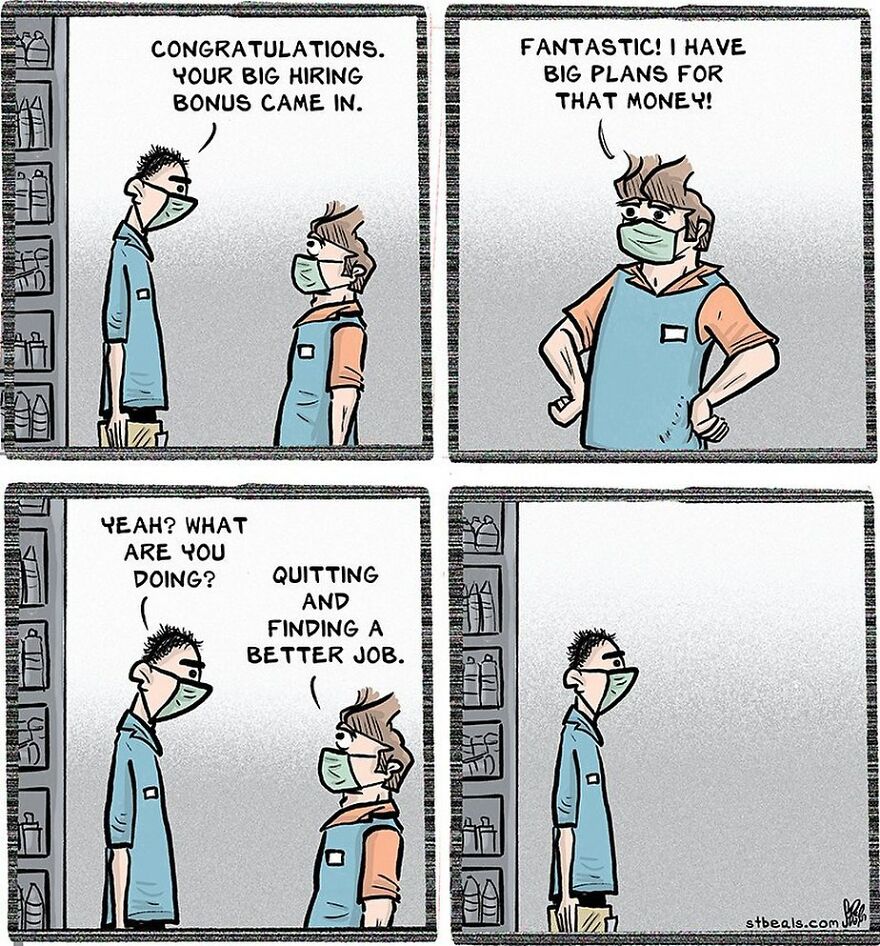
#15
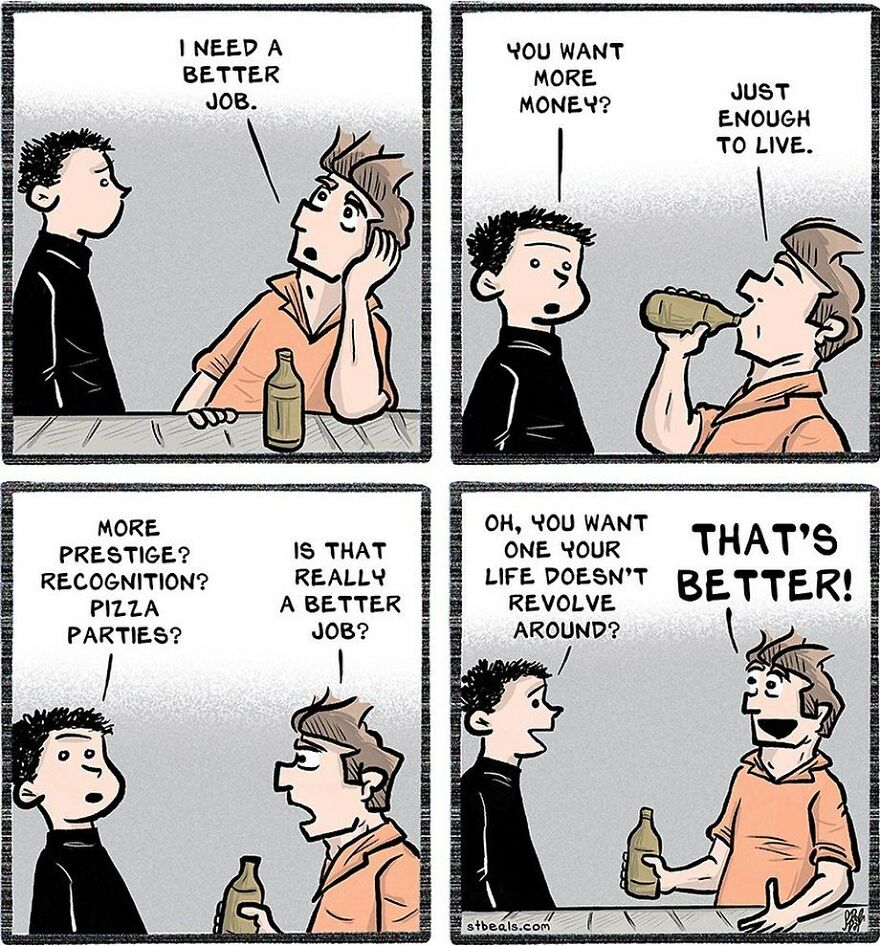
#16
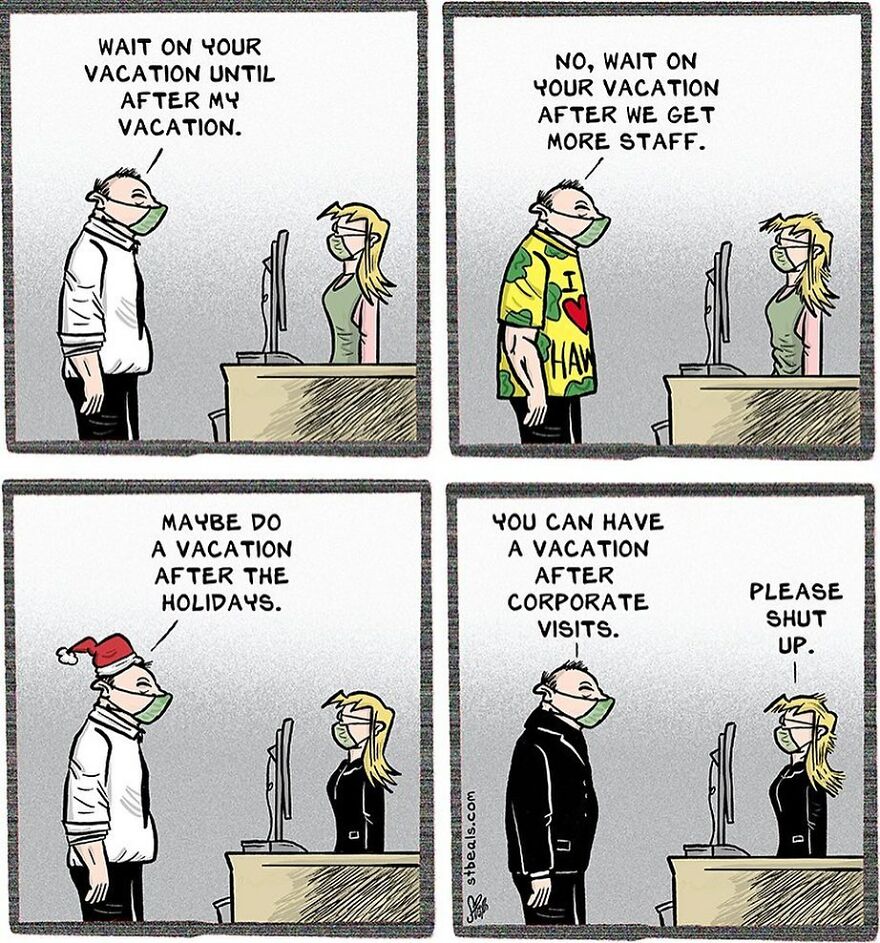
#17
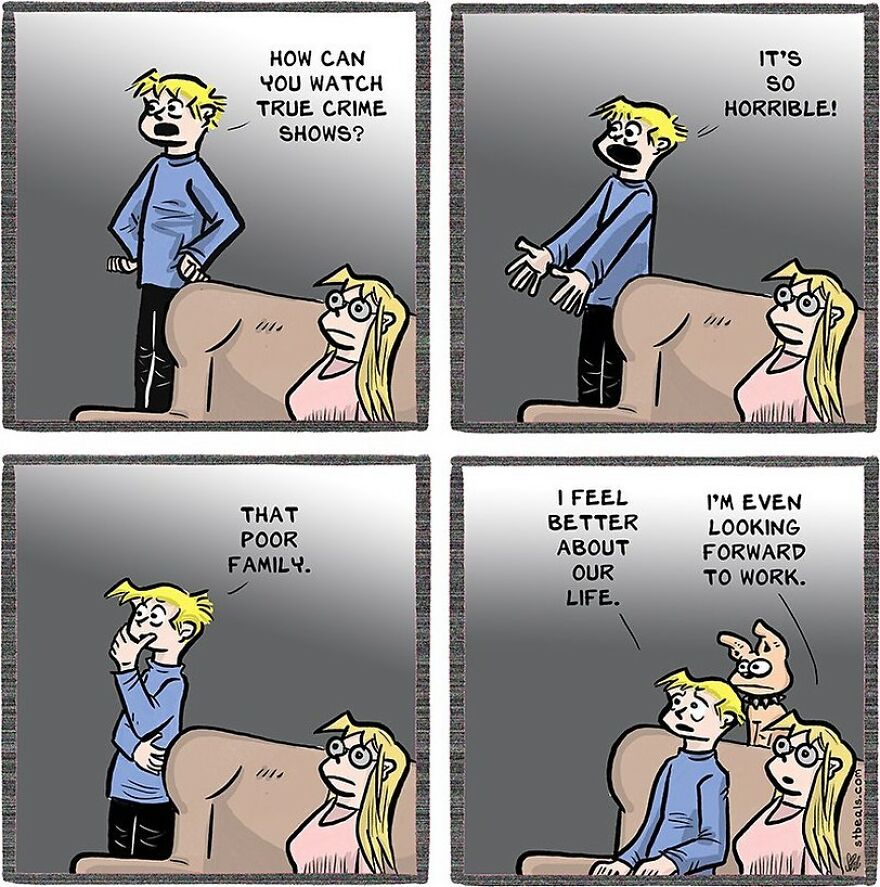
#18
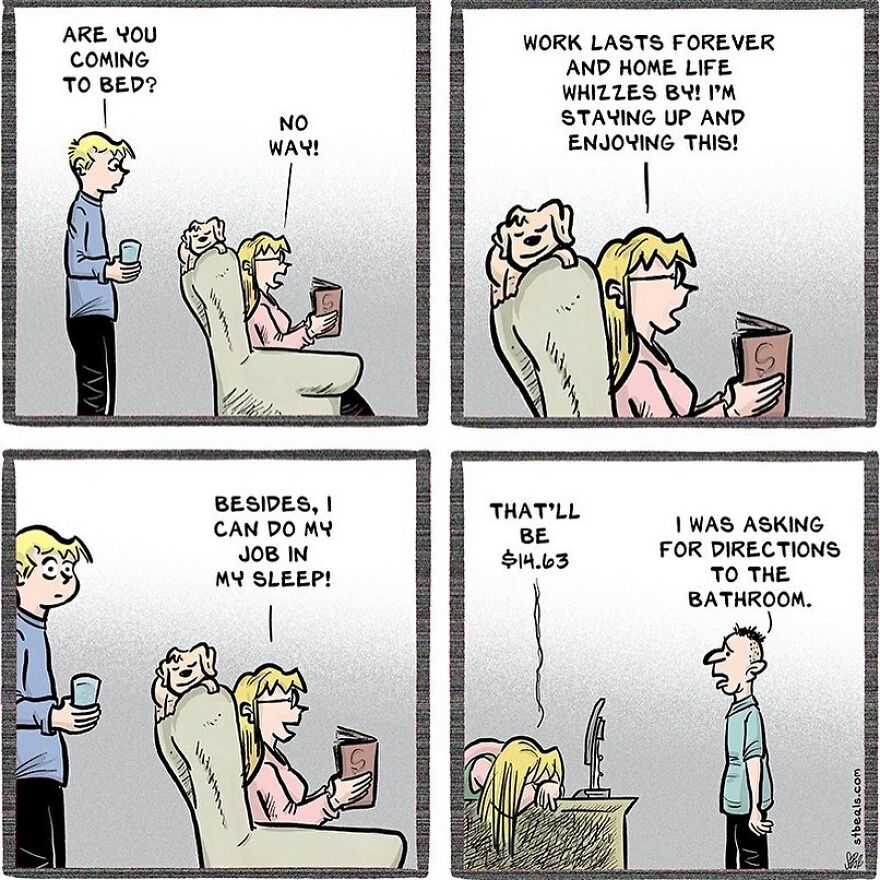
#19
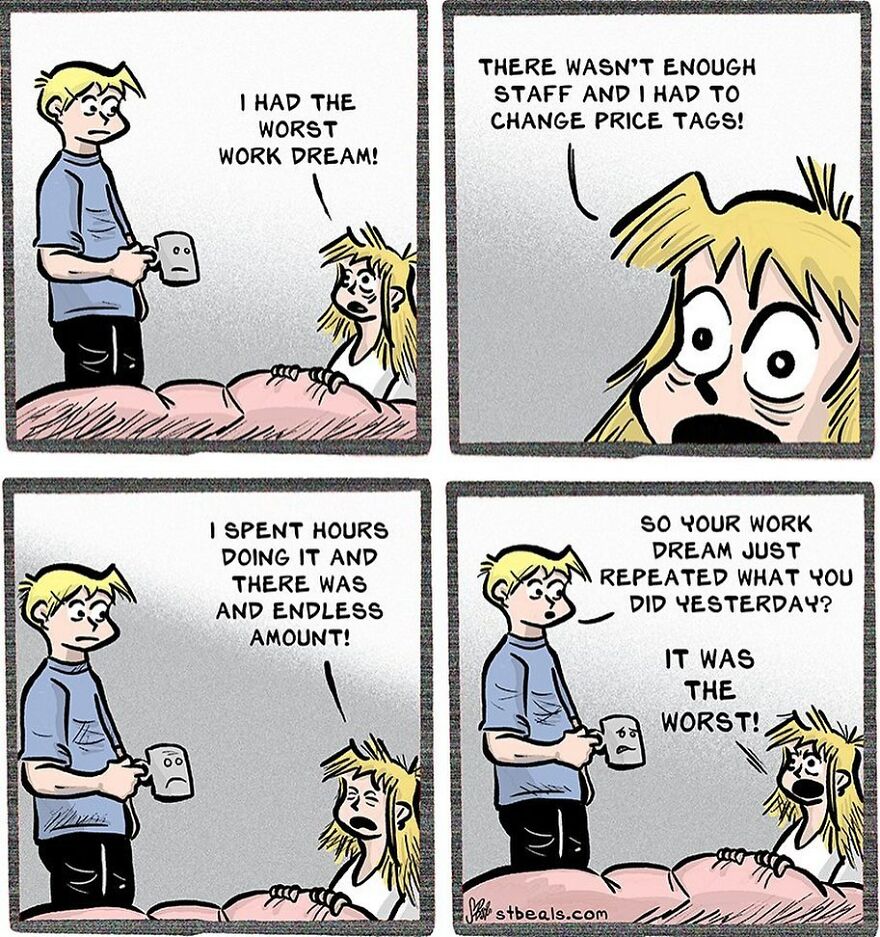
#20
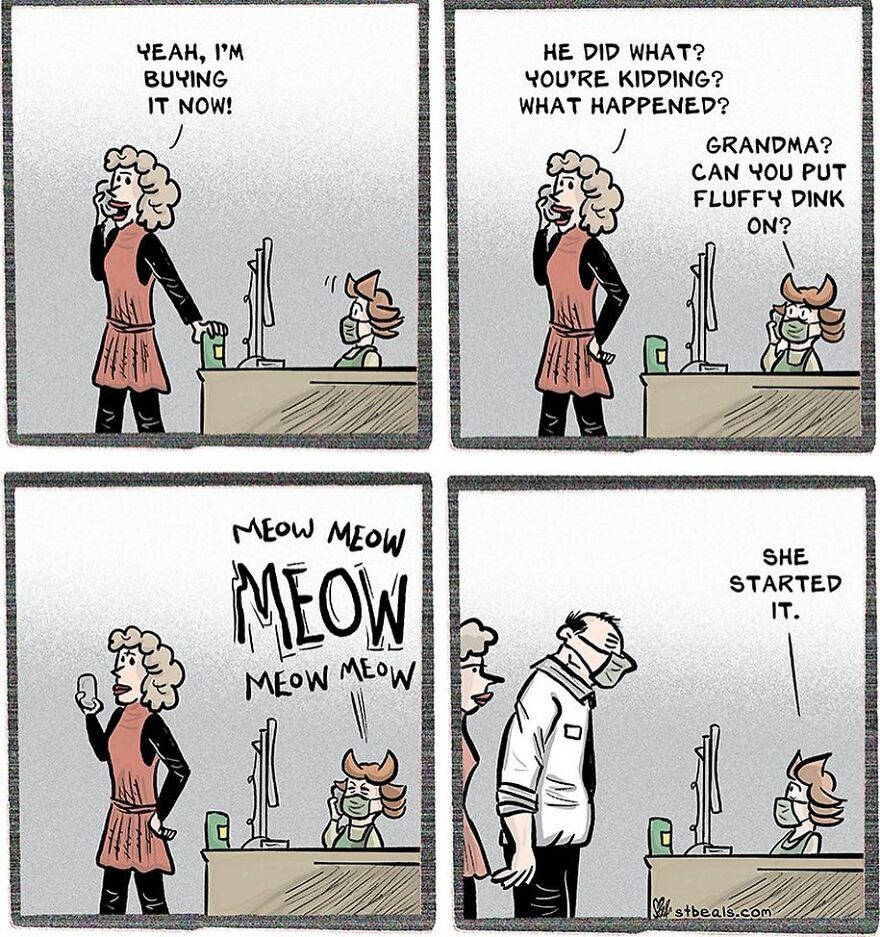
#21
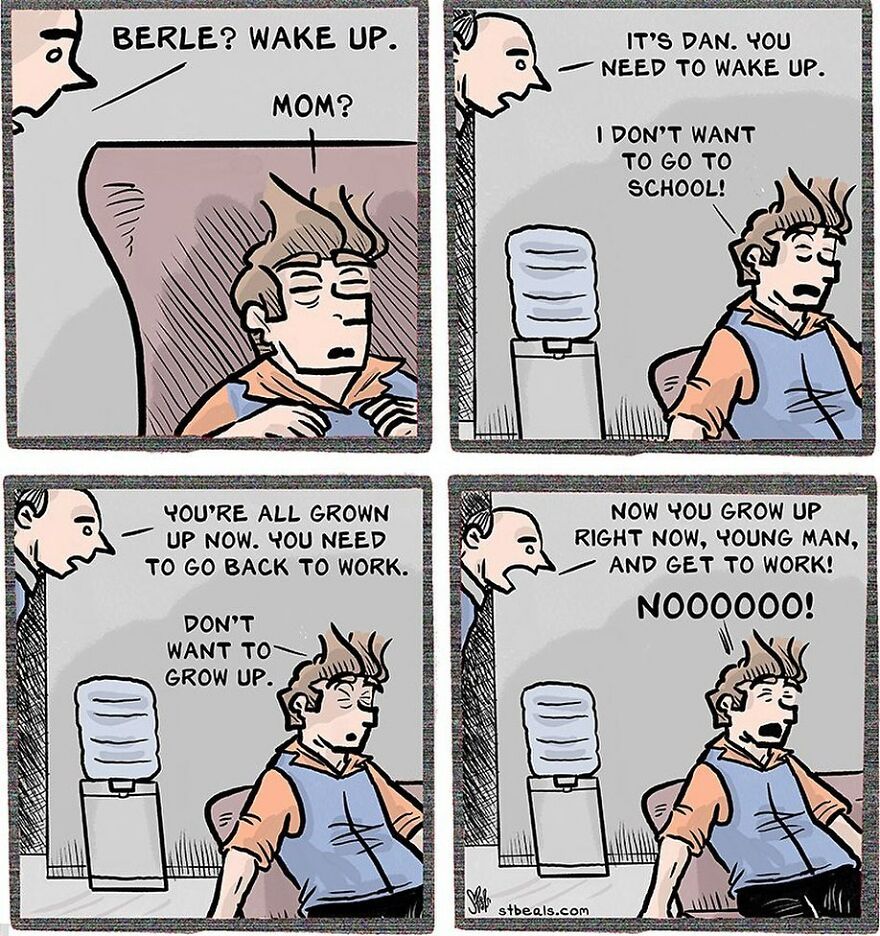
#22
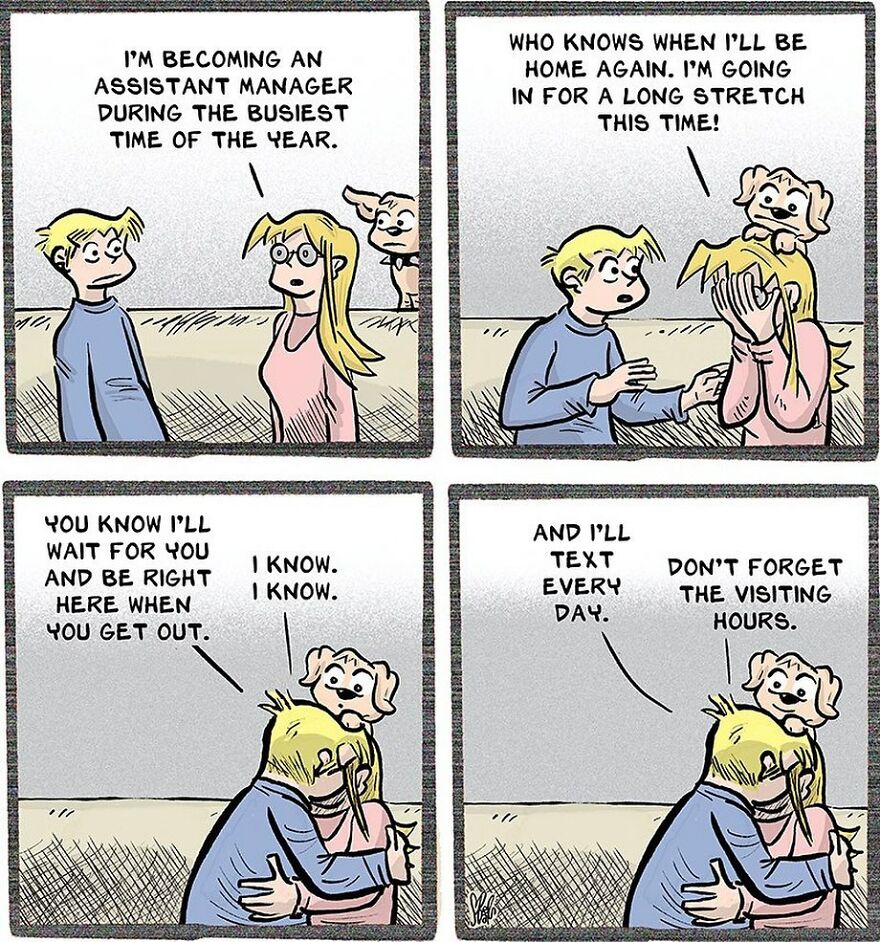
#23
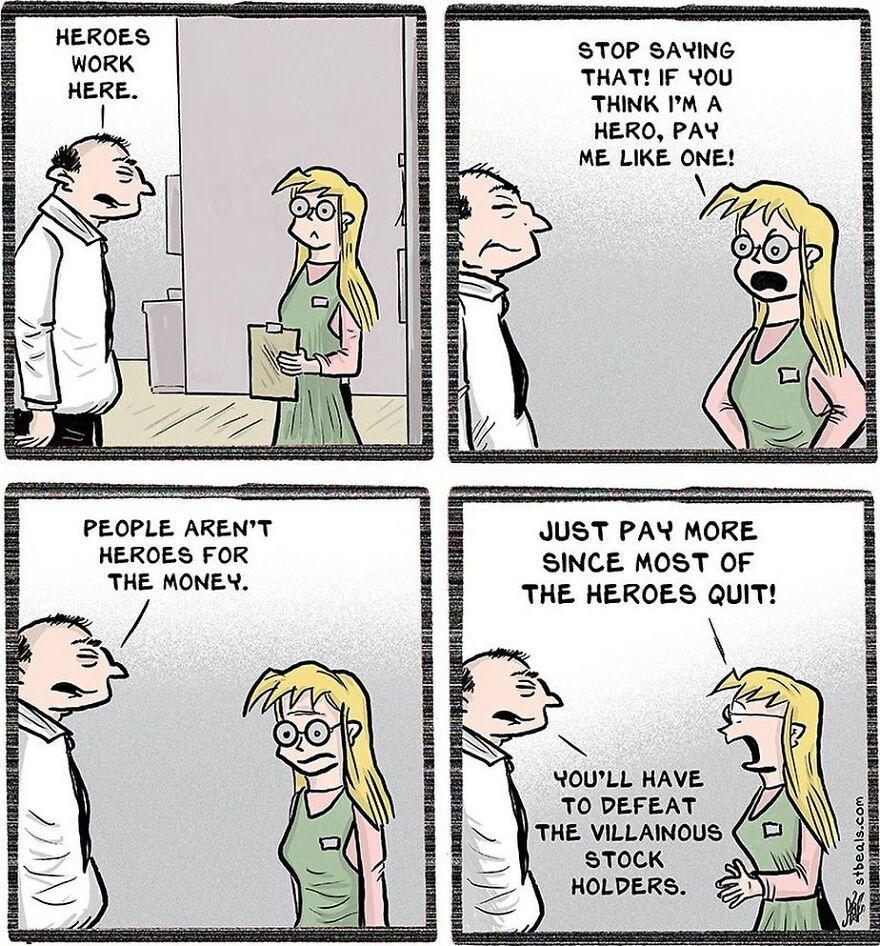
#24
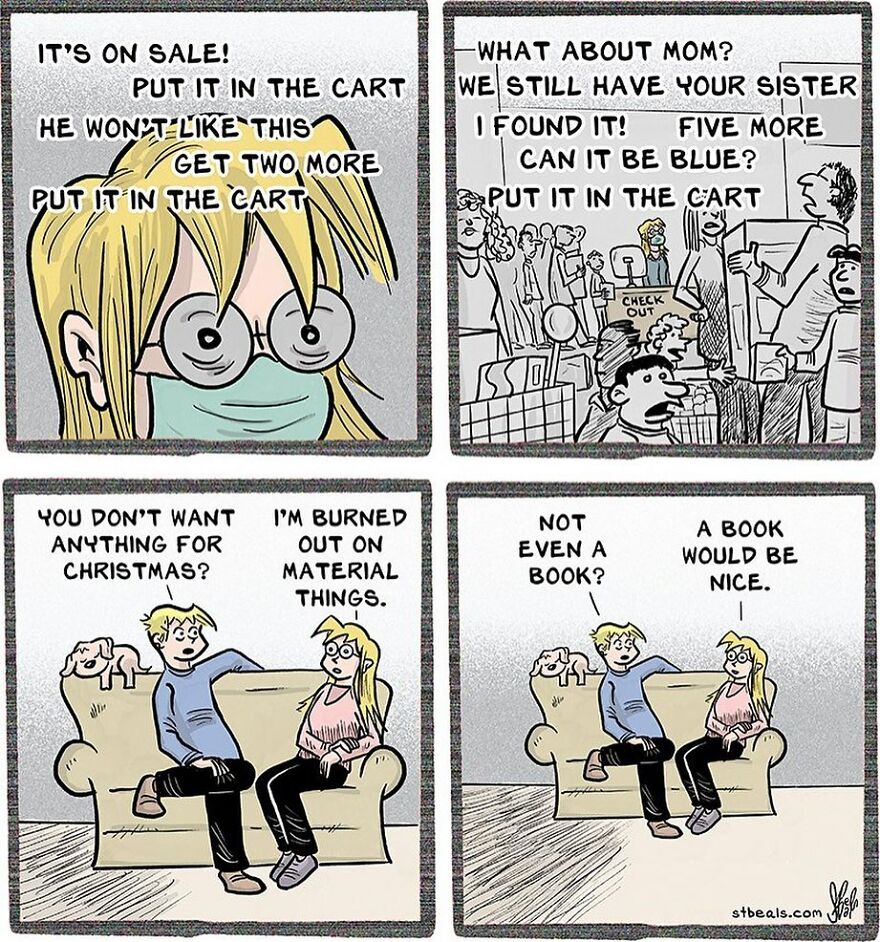
#25
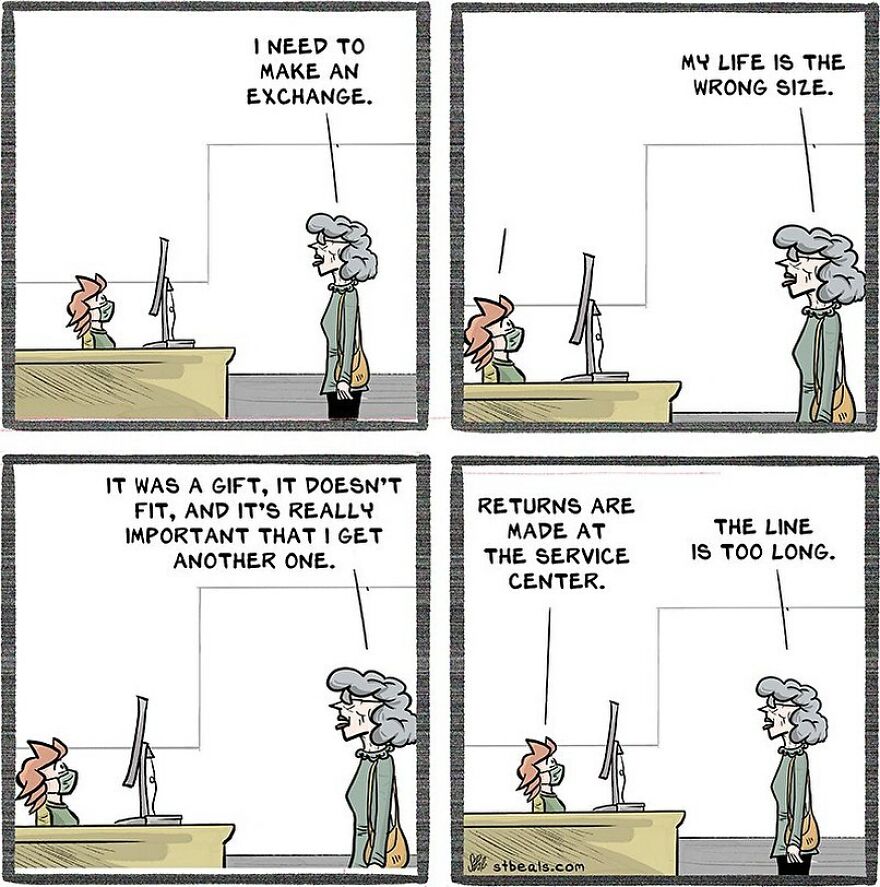
#26
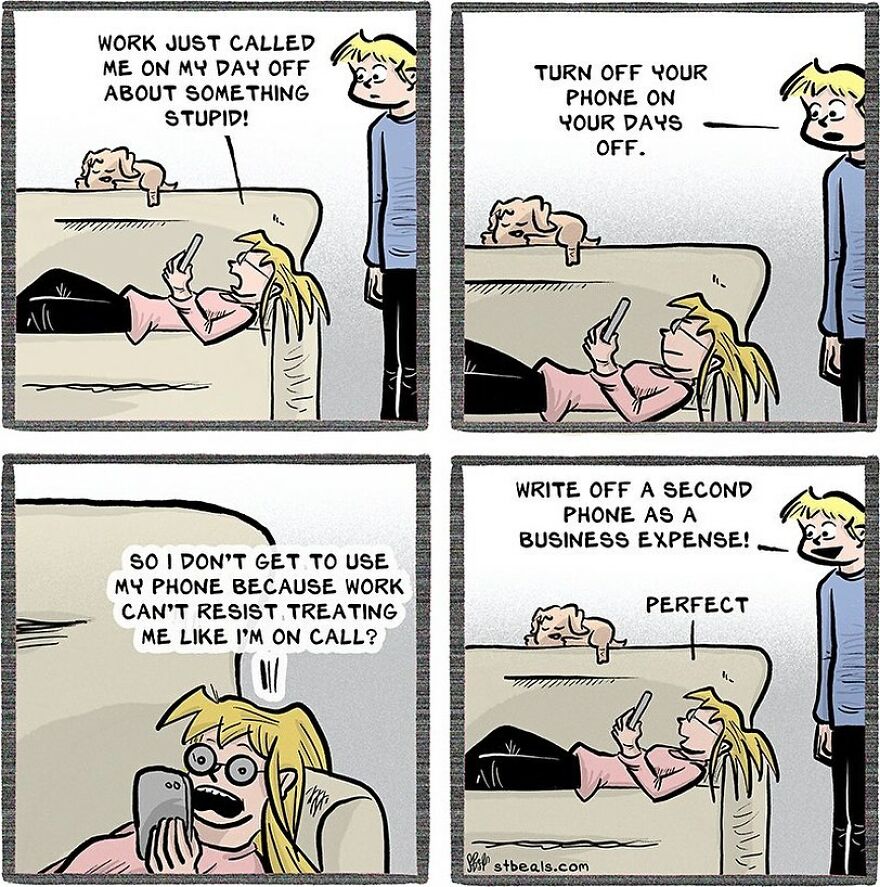
#27
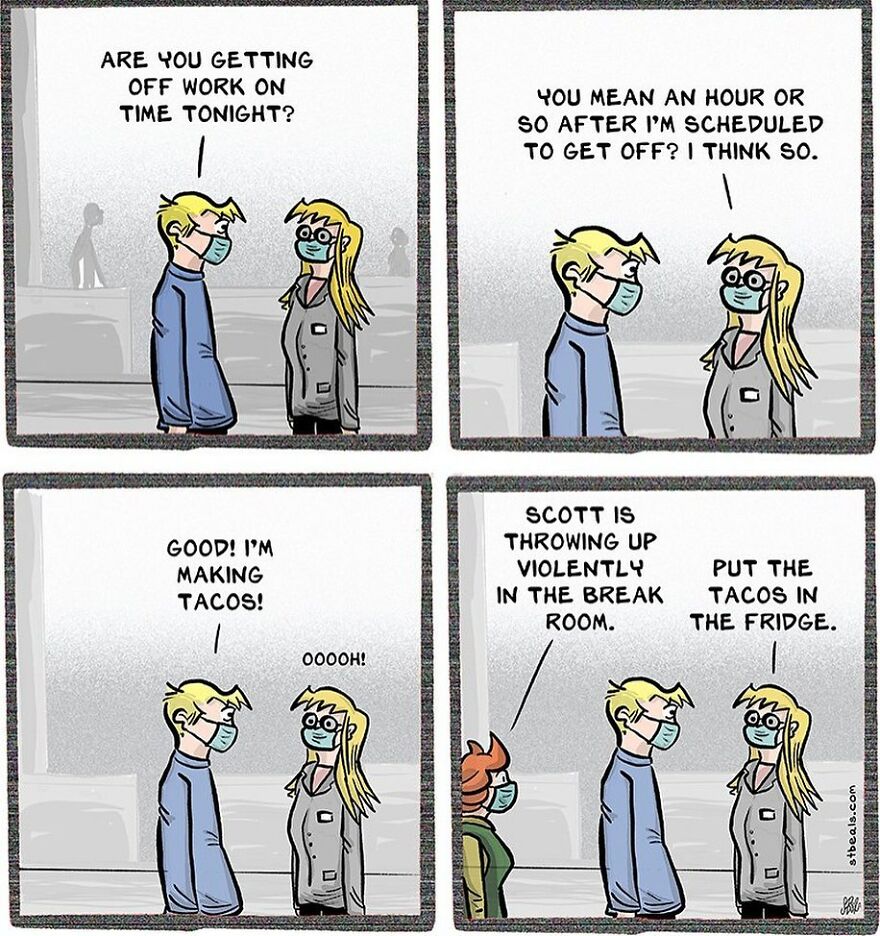
#28
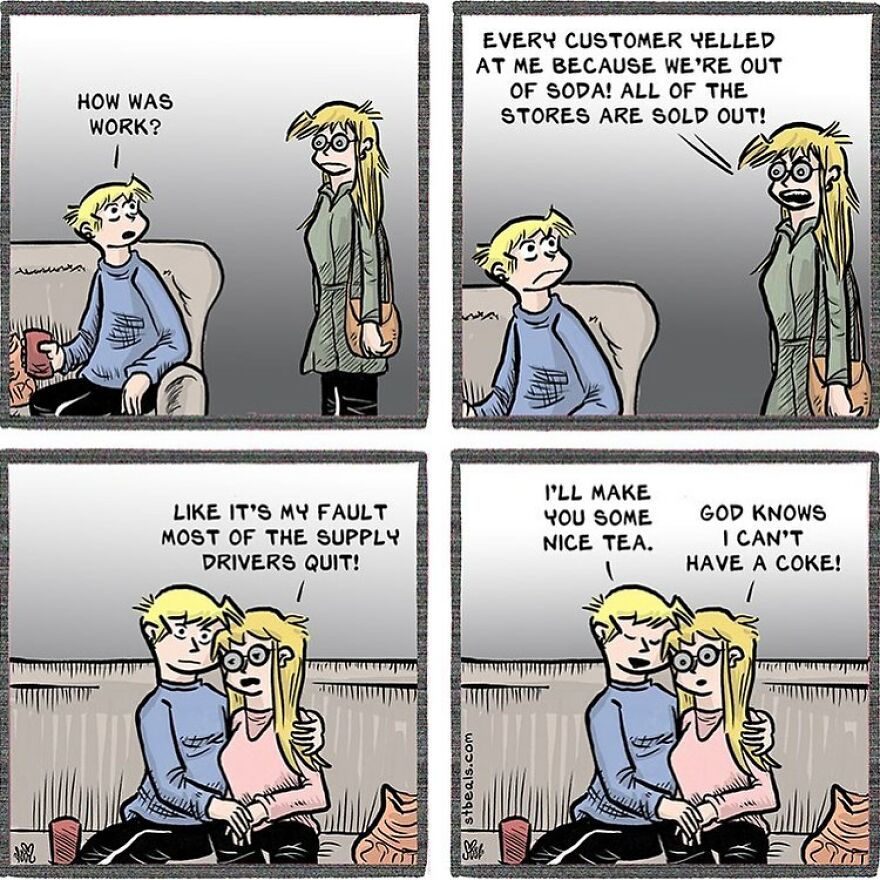
#29
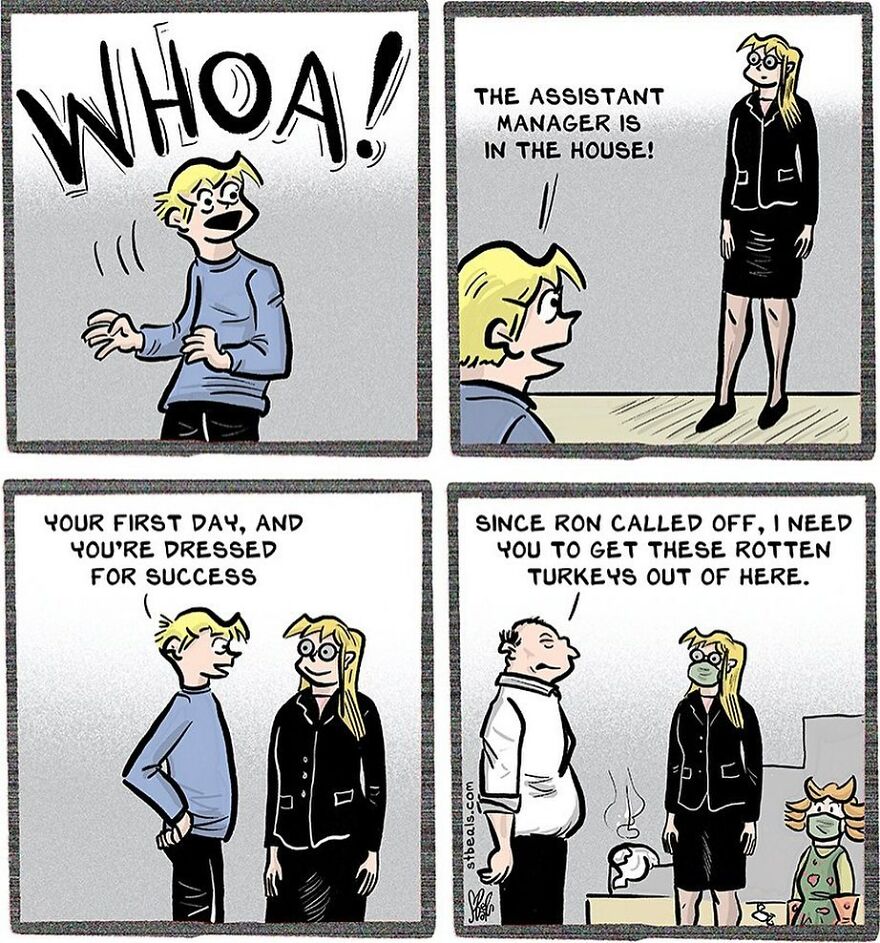
#30
